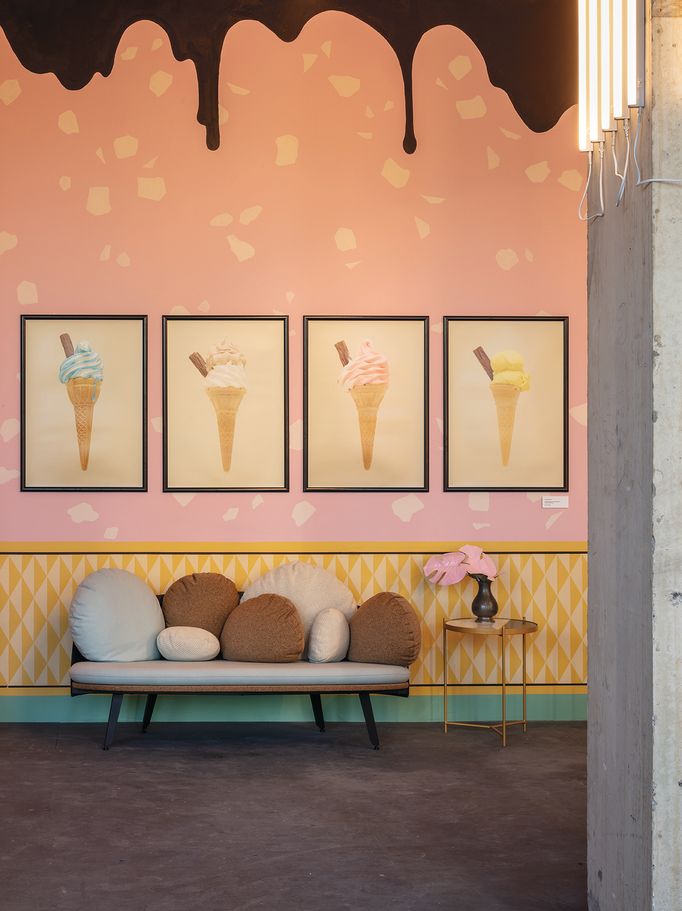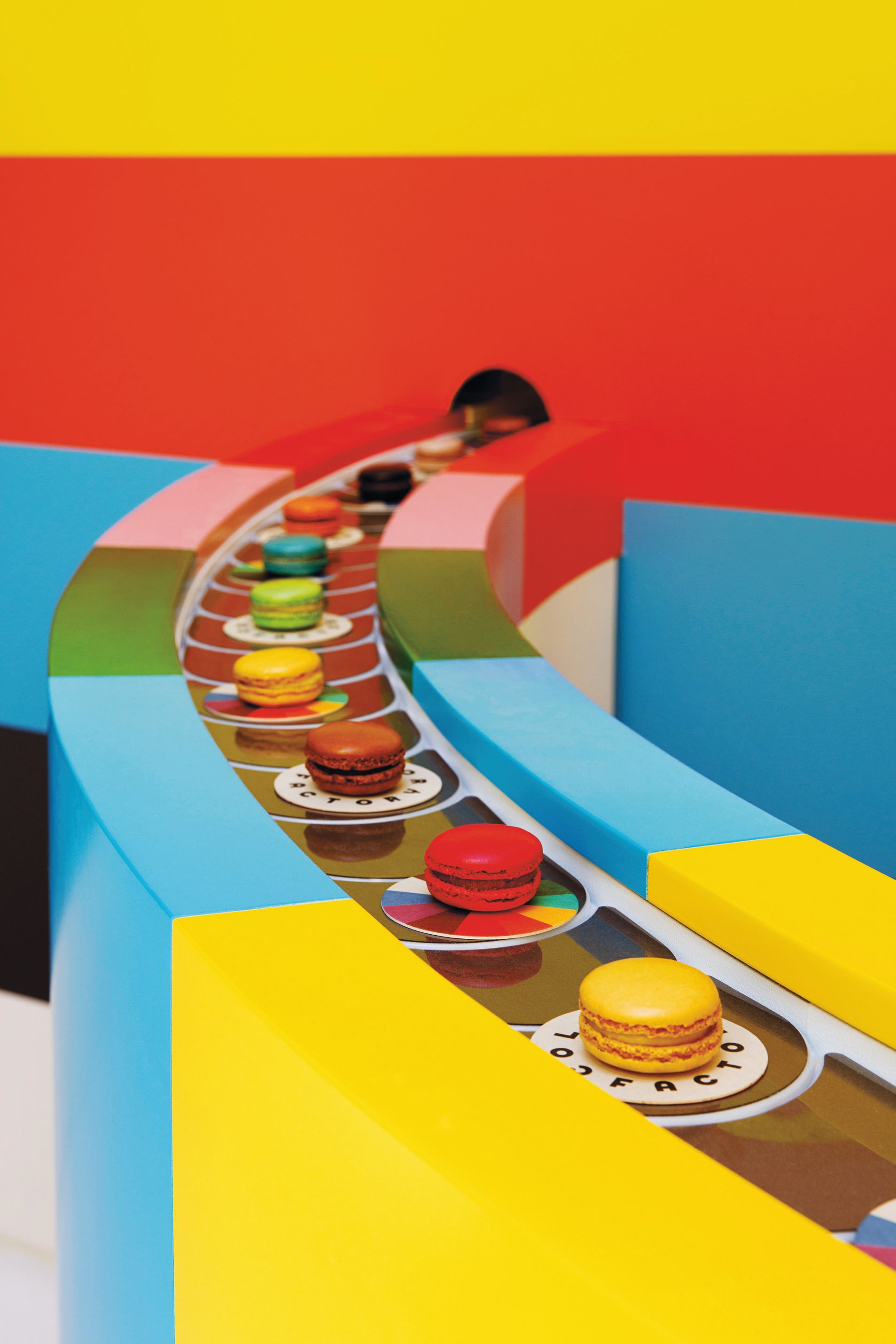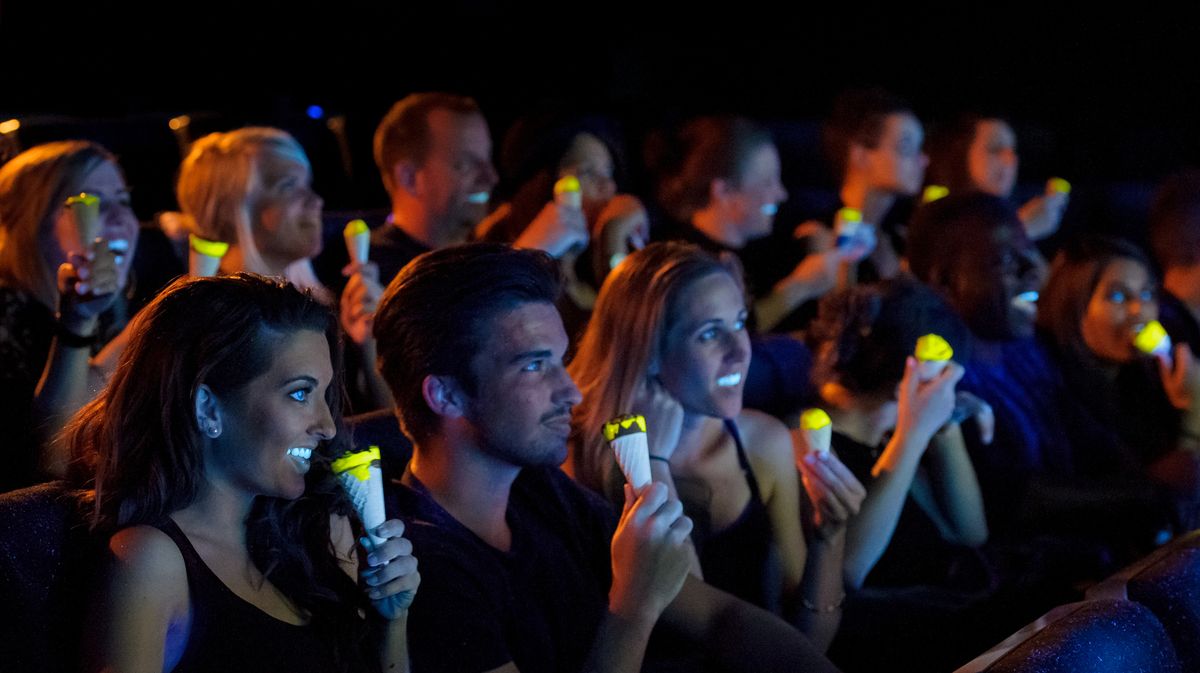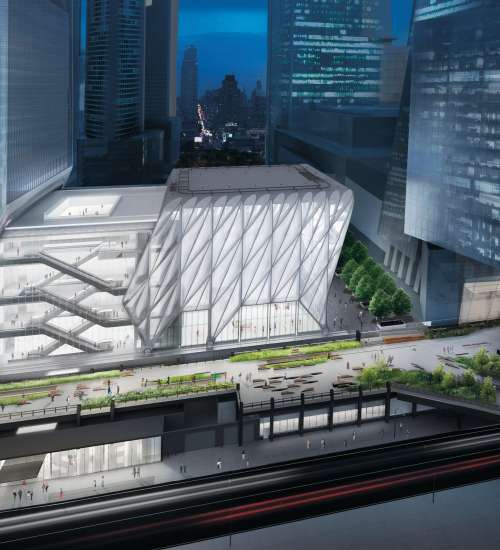The last couple of years has witnessed an unprecedented surge in immersive, highly photogenic exhibitions, from teamLab’s Transcending Boundaries at London’s Pace Gallery to Yayoi Kusama’s traveling Infinity Mirrors and Rain Room. Now the latest wave of ‘pop-up’ museums, short-run exhibitions often set up in vacant real estate spaces, are bringing the Insta-game to new levels.

The Museum of Ice Cream, which debuted in San Francisco in 2016, included such Insta-friendly displays as suspended bananas, giant cherries, and a rainbow sprinkle pool, and with over 125,000 hashtagged posts, it is considered one of the most Instagrammed exhibitions ever.
New York’s latest pop-up sensation, a glittering 20,000 square foot playland called the Color Factory, even comes with built-in selfie machines. Visitors are given a personalized barcode assigned to their email or phone number, and in the more Instagrammable rooms – say the ones filled with shiny balloons or a belt of rainbow macaroons – they simply swipe the barcode and a camera is prompted to count down from five. Pictures are sent instantly.

According to Color Factory founders, the interactive exhibit aims to ‘celebrate the discovery, serendipity and generosity of color’, and collaborating artists engage the senses via colorful installations including a field of geometric blossoms, colorful sliding screens and a luminous dance floor.
But while such pop-up installations succeed in tantalizing viewers, whether they merit the term ‘museum’ remains up for debate.
“These shows are sensory experiences, not conceptual or critical ones,” says Mr. Glen Helfand, art critic and associate professor of visual and critical studies and California College of the Arts. Mr. Helfand says social media and digital culture have cultivated an attitude for increasingly quick consumption and dissemination. “We want to immediately see and share, but not necessarily digest.”
Not all pop-ups claim to be museums, though. Manhattan’s Rosé Mansion bills itself as a wine-tasting experience where visitors can traverse 14 rooms inspired by the pink wine. Co-founder Mr. Tyler Balliet has a background in throwing large-scale wine tastings and says he wants participants to learn something while also taking advantage of photo ops with a giant bathtub of roses. “We’re living in an age where visuals are really important, and I don’t think that’s a bad thing,” Mr. Balliet says.

However you choose to categorize Insta-exhibitions, they are proving highly popular. The Color Factory previously enjoyed an eight-month run in San Francisco. The first edition of the exhibit was meant to last a month, but ended up being so sought-after that the webpage hosting the ticket sales temporarily crashed. Similarly, when the Museum of Ice Cream announced its arrival to the city, tickets sold out within minutes.
The trend is also taking hold across the Atlantic. In July, culinary arts studio Bompas and Parr opened a pop-up ice cream museum in London’s King’s Cross. The studio is best known for staging food-based stunts like clouds of gin or jelly replicas of the Houses of Parliament. With ‘SCOOP: A Wonderful Ice Cream World’ they promise to ‘bring your favorite dessert to life in a total sensory immersion’.
But co-founder Mr. Sam Bompas says SCOOP is different from its American counterparts. “The pop-up shows we’ve seen in San Francisco and New York aren’t much cop in terms of inspiration,” he says. “There is not the depth of research, science, knowledge that we would regularly look for.”
SCOOP aims to plunge attendees into ice cream’s fascinating history. 2018 is an important year, Bompas says, as it’s the 300th anniversary of the first printed ice cream recipe. At the show visitors can view a collection of Victorian ice-cream moulds, learn about the invention of the ice cream cone, and make DIY ice cream at the knee of Agnes B Marshall, one of the culinary pioneers of the 19th century.
.jpeg)
“For us the best exhibitions inform, entertain and ultimately inspire,” says Mr. Bompas. “Visitors will have left, not only learning about the glorious history of ice-cream, eating their way through history but also learning how to avoid brain-freeze for the rest of their life, based on contemporary science.”
But just because it’s educational, that doesn’t mean it can’t be shareable, and the pink exhibition walls offer plenty of eye candy. One element of the exhibition uses the medium of powerful laser lights to show attendees what goes on in the brain as they taste Ben & Jerry’s Moo-phoria ice cream. “The light ice-cream stimulates a spectacular reaction when you taste it,” Mr. Bompas says.
In the future he believes the pop-up medium will evolve and deepen and become more like conventional museum exhibitions. And in turn museum curators will learn the best tricks of the pop-ups to help popularize their shows.
One trick appears to be seizing on a truth that more-traditional museums are still coming to terms with: viewers want to feel they are part of the exhibition. “It tips the balance of power and makes the experience more democratic on some levels,” says Dr. Kylie Budge, a senior research fellow at Western Sydney University. “There’s an element of co-creation involved.”










.jpeg)


 Back
Back
